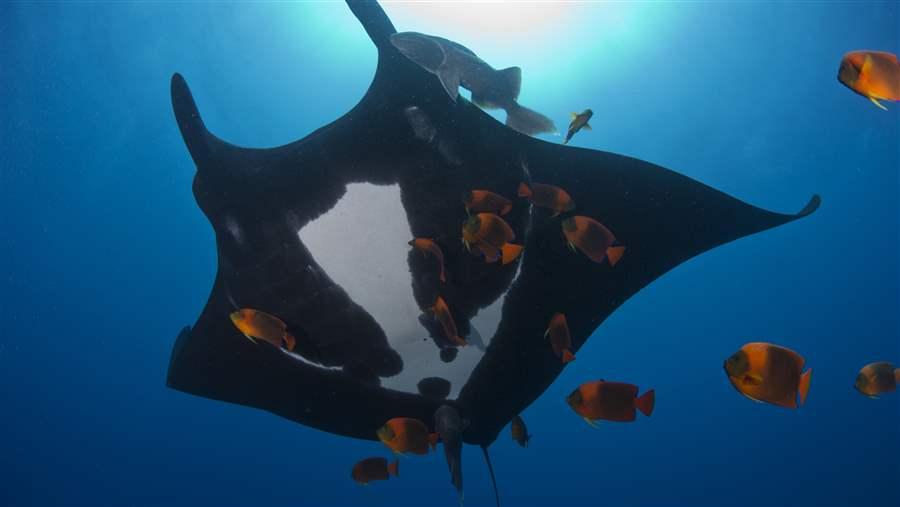Imagine diving into the crystal-clear waters of Mexico’s protected marine parks, embarking on an adventure that takes you deep into the heart of nature’s wonders. From the vibrant coral reefs teeming with colorful fish, to the gentle giants of the sea gracefully gliding by, these marine parks offer a serene and awe-inspiring experience like no other. As you explore these marine havens, you’ll not only witness the immense biodiversity of Mexico’s seas but also play an active role in their preservation. With each dive, you’ll find yourself immersed in a world of beauty and tranquility, making memories that will last a lifetime. Unveiling the hidden treasures of Mexico’s protected marine parks, this article invites you to embark on a journey that will leave you in awe of nature’s extraordinary wonders.
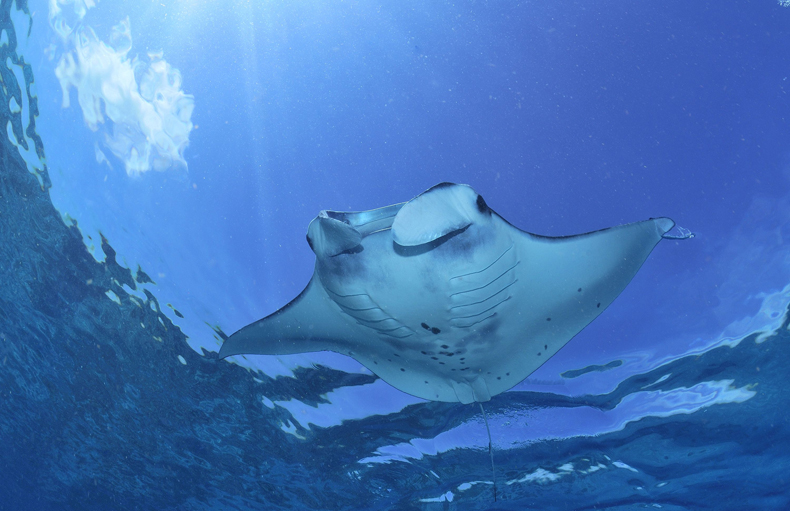
Overview of Mexico’s Protected Marine Parks
Mexico’s protected marine parks are a true treasure trove of natural wonders. With a rich diversity of marine life, these parks play a vital role in preserving and conserving Mexico’s coastal ecosystems. From the Baja Peninsula to the Gulf of Mexico, these marine parks span across Mexico’s coast, protecting a wide range of habitats and species. This article will take you on a virtual journey through some of the most breathtaking marine parks in Mexico, highlighting their locations, the importance of their conservation efforts, and the various types of marine parks you can explore.
Location and Size
Mexico’s protected marine parks are located along its extensive coastline, which stretches over 9,000 kilometers. From the world-famous Mexican Caribbean to the stunning Pacific coast, these marine parks can be found in various regions throughout the country. Some of the notable locations include Baja California Sur, Quintana Roo, Veracruz, and the Gulf of California.
The size of these marine parks varies, with some covering vast areas to protect entire ecosystems, while others are smaller and dedicated to specific species or habitats. Regardless of their size, these marine parks play a critical role in safeguarding Mexico’s coastal and marine biodiversity.
Importance of Marine Parks
Mexico’s marine parks are of utmost importance for several reasons. First and foremost, they provide protection for fragile and vulnerable marine ecosystems, including coral reefs, seagrass beds, and mangroves. These ecosystems serve as nurseries for various marine species, acting as vital breeding grounds and habitats for countless organisms.
Furthermore, marine parks play a crucial role in conserving and protecting endangered species. Many of Mexico’s marine parks are home to numerous species on the brink of extinction, such as sea turtles, whales, and sharks. By providing a safe haven for these at-risk creatures, marine parks contribute significantly to their survival and recovery.
Finally, these protected areas are also essential for scientific research and monitoring. They allow scientists and researchers to study marine life, monitor ecosystem health, and gather valuable data on climate change and the impacts of human activities on the marine environment.
Types of Marine Parks
Mexico’s marine parks come in different types and designations, each with its own specific purpose and level of protection. Some of the common types of marine parks in Mexico include:
- National Marine Parks: These parks are established by the Mexican government to protect and conserve significant marine areas.
- Biosphere Reserves: These are large-scale protected areas that encompass both marine and terrestrial ecosystems, aiming to conserve biodiversity and promote sustainable development.
- Flora and Fauna Reserves: These reserves focus on protecting specific plant and animal species and their habitats.
- Natural Protected Areas: These include a wide range of marine and terrestrial ecosystems, providing protection and conservation for various habitats and species.
These different types of marine parks collectively contribute to the overall conservation efforts in Mexico, aiming to preserve the country’s natural heritage and ensure the well-being of its marine ecosystems.
The Breathtaking Marine Life
Mexico’s protected marine parks are teeming with an incredible variety of marine life. Let’s dive into the vibrant underwater world, exploring the diverse ecosystems, encountering endangered species, and learning about some of the popular fish species that call these parks home.
Diverse Ecosystems
Mexico’s marine parks harbor a wide range of ecosystems, each with its own distinct characteristics and inhabitants. It’s awe-inspiring to witness the diversity of these underwater landscapes, from the mesmerizing coral reefs to the mesmerizing seagrass meadows and mangrove forests.
Coral reefs are among the most iconic and visually stunning marine ecosystems. With their vibrant colors and intricate structures, these reefs provide shelter and food for numerous fish species, invertebrates, and other marine organisms. The Mexican Caribbean, particularly the Mesoamerican Barrier Reef System, is home to some of the most magnificent coral reefs in the world.
Seagrass meadows, found in marine parks such as Sian Ka’an Biosphere Reserve, offer crucial habitats for many species, including sea turtles and manatees. These lush meadows provide feeding grounds, breeding sites, and nurseries, making them vital for the survival of various marine creatures.
Mangrove forests, found in marine parks like Yum Balam Flora and Fauna Reserve, are equally important. These unique ecosystems provide a complex network of roots and branches that serve as nurseries for juvenile fish, offering protection from predators and serving as feeding grounds for countless organisms.
Endangered Species
Mexico’s marine parks serve as sanctuaries for numerous endangered species. These protected areas play a vital role in the conservation and recovery of these vulnerable creatures, which are crucial for maintaining ecological balance in the marine ecosystem.
One such species is the sea turtle, which includes five different species found in Mexican waters: the green turtle, Kemp’s ridley turtle, hawksbill turtle, loggerhead turtle, and olive ridley turtle. Many marine parks along both coasts of Mexico, such as the Costa Occidental de Isla Mujeres National Park, provide nesting sites for these turtles and implement conservation measures to ensure their survival.
Whales are also a prominent feature of Mexico’s marine parks. The Revillagigedo Archipelago National Park, located in the Pacific Ocean, is a renowned destination for encountering these magnificent creatures. It is home to various whale species, including humpback whales, blue whales, and orcas. Witnessing these gentle giants in their natural habitat is truly a once-in-a-lifetime experience.
Sharks, including species such as the great white shark, whale shark, and hammerhead shark, are also found in Mexico’s marine parks. These apex predators often face significant threats due to overfishing and habitat degradation. Thanks to the protection offered by marine parks like Cabo Pulmo National Park, these majestic creatures can thrive and contribute to the overall health of the marine ecosystem.
Popular Fish Species
Mexico’s marine parks are a paradise for diving and snorkeling enthusiasts, offering a chance to swim alongside an incredible array of fish species. These parks are home to an abundance of colorful and exotic fish that create a vibrant aquatic spectacle.
One popular fish species found in Mexico’s marine parks is the parrotfish. Known for their vibrant colors and beak-like mouth, parrotfish play an important role in maintaining the health of coral reefs. They help prevent the overgrowth of algae, which can smother corals, by grazing on algae-covered surfaces.
Another iconic fish species is the clownfish, famously known for its appearance in the movie “Finding Nemo.” These small fish, also known as anemonefish, form a symbiotic relationship with sea anemones. They seek protection within the anemone’s tentacles while providing it with food in return.
Other notable fish species in Mexico’s marine parks include angelfish, butterflyfish, surgeonfish, and a variety of reef-dwelling species that contribute to the stunning biodiversity found in these underwater landscapes.
Exploring the Yum Balam Flora and Fauna Reserve
Nestled in the northern part of Mexico’s Yucatan Peninsula lies the enchanting Yum Balam Flora and Fauna Reserve. With its pristine beaches, lush mangrove forests, and crystal-clear waters, this reserve offers a captivating escape into nature’s embrace.
Location and Features
Yum Balam Flora and Fauna Reserve spans across an area of approximately 150,000 hectares, encompassing both marine and terrestrial ecosystems. It is located in the state of Quintana Roo, just north of the popular tourist destination of Cancun. The reserve includes various habitats, such as coastal dunes, wetlands, and the mesmerizing lagoons of Holbox and Chiquilá.
Abundant Species
The Yum Balam Reserve is teeming with a rich diversity of plant and animal species. Its mangrove forests serve as nurseries for various marine creatures, including fish, crustaceans, and birds. The reserve is also an important nesting site for sea turtles, such as the loggerhead turtle and green turtle, which return to the beaches each year to lay their eggs.
Additionally, the lagoons of Holbox and Chiquilá are renowned for their abundant marine life. These turquoise havens are home to numerous fish species, providing ample opportunities for snorkeling and diving enthusiasts to explore the underwater wonders.
Activities for Visitors
Yum Balam Flora and Fauna Reserve offers a range of activities for visitors to engage with its natural beauty. Snorkeling and diving are popular ways to explore the vibrant coral reefs and encounter the colorful marine life. The waters of the reserve are known for their excellent visibility, making it an ideal spot for underwater adventures.
For those seeking a more relaxed experience, the reserve’s pristine beaches provide the perfect setting for sunbathing, picnicking, or simply immersing oneself in the tranquil surroundings. Birdwatching enthusiasts will also delight in the abundance of bird species that call the mangrove forests and wetlands home.
Additionally, guided tours and excursions are available to further enhance the visitor’s experience, providing insightful information about the reserve’s flora, fauna, and conservation efforts.
Discovering the Revillagigedo Archipelago National Park
Located in the Pacific Ocean, the Revillagigedo Archipelago National Park is a remote paradise brimming with unique marine life and breathtaking underwater landscapes. Spanning an area of approximately 153,000 hectares, this national park offers an unforgettable adventure for nature lovers and diving enthusiasts.
Location and Formation
The Revillagigedo Archipelago National Park is situated approximately 400 kilometers off the coast of Baja California Sur. It comprises four volcanic islands: Socorro, San Benedicto, Roca Partida, and Clarion. These islands were formed millions of years ago through volcanic activity, resulting in stunning topography both above and below the water’s surface.
Unique Marine Life
What sets the Revillagigedo Archipelago National Park apart from other marine parks is its exceptional marine biodiversity. The nutrient-rich waters surrounding the islands attract a wide range of marine species, creating a truly remarkable underwater ecosystem.
One of the main attractions of the park is its large population of sharks. Diving in the Revillagigedo Archipelago offers a unique opportunity to encounter various shark species, including hammerhead sharks, silky sharks, whitetip reef sharks, and the awe-inspiring tiger shark. These encounters provide a thrilling and unforgettable experience for divers who dare to explore these pristine waters.
The national park is also renowned for its encounters with giant manta rays. These majestic creatures, with their impressive wingspans, can be observed gracefully gliding through the water. Swimming alongside these gentle giants is a truly humbling experience that highlights the importance of conserving and protecting their habitats.
Diving and Snorkeling Opportunities
The Revillagigedo Archipelago National Park is a diver’s paradise, offering some of the best diving spots in the world. With its crystal-clear waters, divers can descend into the depths and marvel at the stunning underwater landscapes. The volcanic formations, submerged caves, and vibrant coral gardens create an otherworldly ambiance that captivates and mesmerizes.
Snorkelers can also explore the shallow reefs and encounter a myriad of fish species and marine life. The park’s shallow waters are home to colorful reef fish, such as angelfish and butterflyfish, as well as sea turtles and playful dolphins.
Both divers and snorkelers should be prepared for the park’s strong currents, which can be challenging but add to the exhilarating diving experience. It is recommended to have some diving or snorkeling experience before venturing into these waters to ensure safety and maximum enjoyment.
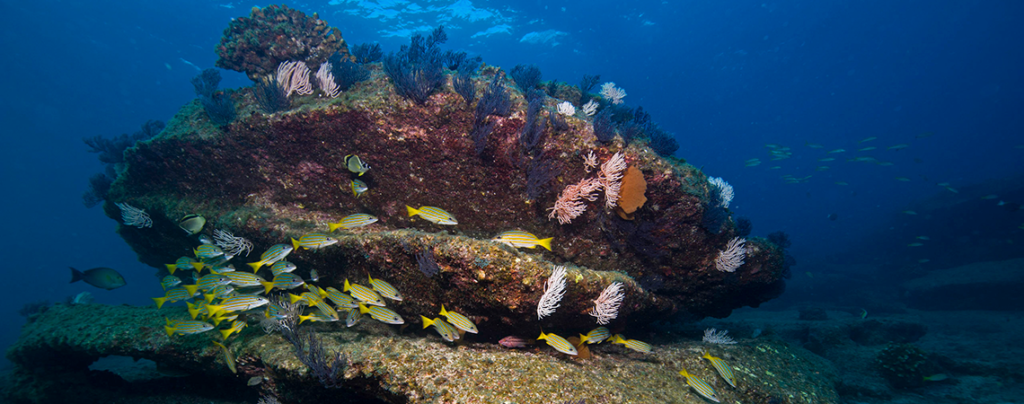
Protecting the Sian Ka’an Biosphere Reserve
Located on the eastern coast of the Yucatan Peninsula, the Sian Ka’an Biosphere Reserve is a UNESCO World Heritage Site that showcases the extraordinary beauty of Mexico’s coastal ecosystems. Spanning over 528,000 hectares, this biosphere reserve is a true testament to Mexico’s commitment to biodiversity conservation.
UNESCO World Heritage Site
The Sian Ka’an Biosphere Reserve was designated as a UNESCO World Heritage Site in 1987. This recognition highlights its outstanding universal value, recognizing the exceptional importance of its biodiversity and its significant role in preserving Mexico’s natural heritage.
The reserve is not only home to an incredible variety of flora and fauna but also encompasses a range of ecosystems, including mangroves, wetlands, savannahs, and coastal dune systems. This diversity of habitats contributes to the reserve’s ecological significance and makes it a haven for countless species.
Biodiversity and Conservation
Sian Ka’an Biosphere Reserve boasts an impressive biodiversity, providing a sanctuary for numerous endangered and threatened species. It is estimated that the reserve is inhabited by approximately 103 mammal species, including the jaguar, puma, and tapir. Over 350 bird species have been recorded in the area, making it a paradise for birdwatchers.
The reserve is known for its vibrant coral reefs, which are part of the Mesoamerican Barrier Reef System, the second-largest barrier reef system in the world. These reefs are not only visually stunning but also provide essential habitats for countless marine species, including fish, invertebrates, and sea turtles.
Conservation efforts within the Sian Ka’an Biosphere Reserve are multifaceted and focus on habitat restoration, reforestation, and sustainable resource management. These endeavors aim to protect the reserve’s delicate ecosystems and ensure the long-term survival of its diverse array of species.
Eco-tourism in Sian Ka’an
Sian Ka’an Biosphere Reserve offers a range of eco-tourism activities that allow visitors to explore its natural wonders while contributing to its conservation efforts. Guided tours, both on land and in the water, provide opportunities to learn about the reserve’s unique ecosystems and the importance of preserving them.
Visitors can embark on boat tours through the reserve’s lagoons and canals, observing wildlife, and gaining insights into the local culture and traditional fishing practices. Kayaking and paddleboarding excursions allow for a more immersive experience, allowing visitors to navigate through the mangrove forests and explore hidden corners of the reserve.
Furthermore, educational programs and workshops within the reserve provide opportunities to learn about sustainable practices, biodiversity conservation, and the role of local communities in the protection of these fragile ecosystems.
The Hidden Gem: Cabo Pulmo National Park
Tucked away on the eastern coast of the Baja Peninsula lies Cabo Pulmo National Park, a hidden gem renowned for its impressive coral reefs and remarkable story of conservation and recovery. With its crystal-clear waters and thriving marine life, this marine park is a testament to the positive impacts of conservation efforts.
Impressive Coral Reefs
Cabo Pulmo National Park is home to one of the oldest coral reef systems in the American Pacific. This ancient reef, estimated to be over 20,000 years old, has survived countless challenges and now flourishes as a result of the park’s conservation measures.
The coral reefs of Cabo Pulmo are teeming with life, displaying an incredible diversity of marine species. Brightly colored corals provide a stunning backdrop for countless fish species, including snappers, groupers, and butterflyfish. Rays gracefully glide through the water, while sea turtles elegantly navigate the reef in search of nourishment.
The abundance of marine life is a testament to the park’s recovery and serves as a reminder of the importance of protecting these fragile ecosystems. Cabo Pulmo National Park stands as a shining example of successful conservation efforts and highlights the potential for other marine parks around the world to recover and thrive.
Recovery and Conservation Efforts
Cabo Pulmo National Park’s story of recovery and conservation is truly remarkable. In the 1980s, the reef system faced severe degradation due to overfishing and unsustainable tourism practices. The local community recognized the urgency to protect their invaluable natural resource and established the park in 1995.
Since then, the park has implemented strict regulations, including a complete ban on fishing within its boundaries. This conservation measure has allowed fish populations to recover and has contributed to the resurgence of the coral reefs. Today, the park’s ecosystem is thriving, drawing divers and snorkelers from around the world to witness its remarkable transformation.
The restoration of Cabo Pulmo’s coral reefs is a testament to the power of community-driven conservation efforts. It exemplifies the potential for sustainable practices and the positive impact that individuals and communities can have on the preservation of marine ecosystems.
Activities and Attractions
Cabo Pulmo National Park offers a range of activities for visitors to immerse themselves in the enchanting underwater world. Snorkeling and diving are the primary ways to explore the park’s coral reefs, allowing visitors to witness firsthand the remarkable biodiversity and the park’s stunning transformation.
For those seeking a more relaxed experience, the park’s idyllic beaches provide the perfect setting for sunbathing, picnicking, and enjoying the coastal scenery. Kayaking and paddleboarding are also popular activities, offering a chance to navigate the pristine waters and explore the park’s coastline.
To enhance the visitor’s experience, local operators and guides offer guided tours, providing insightful information about the park’s history, conservation efforts, and the incredible marine life that inhabits its waters. These guided tours ensure a deeper appreciation for the marine park’s ecological significance and the importance of its protection.
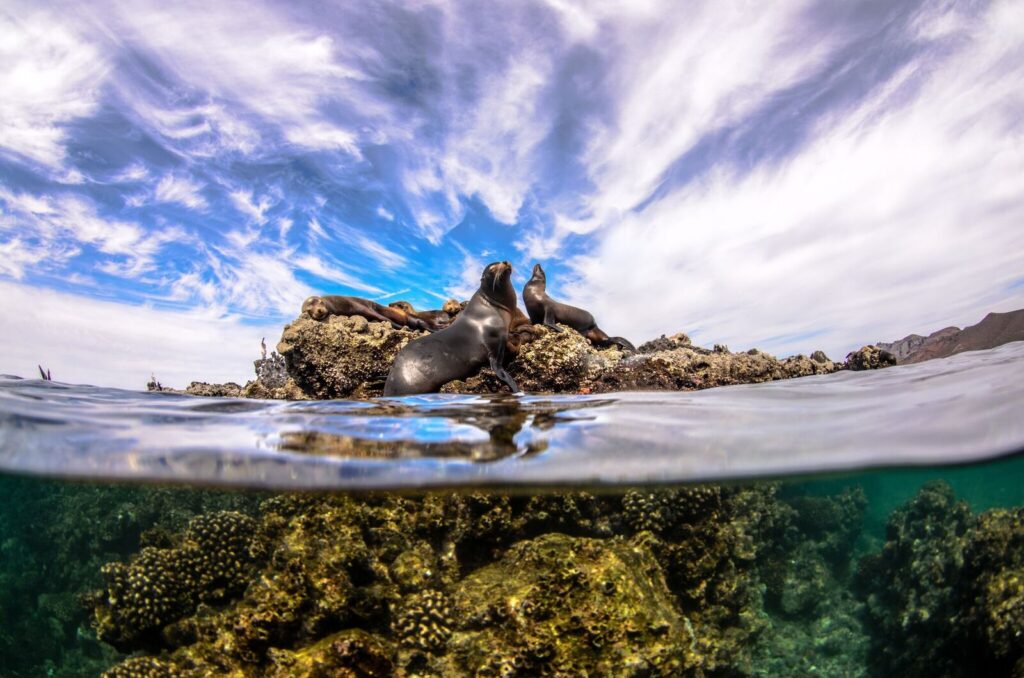
Marine Parks in the Gulf of California
The Gulf of California, also known as the Sea of Cortez, is a biodiversity hotspot and home to numerous marine parks that showcase the region’s remarkable natural heritage. With its rugged coastlines, islands, and diverse marine life, the Gulf of California offers a unique and captivating experience for nature enthusiasts.
Islands and Marine Life
The Gulf of California is known for its archipelagos and islands, each with its own unique characteristics and marine ecosystems. Islands such as Espiritu Santo and Carmen in the Gulf of California Biosphere Reserve boast stunning landscapes, rich biodiversity, and pristine beaches.
One of the highlights of the Gulf of California is its incredible marine life. The region is home to an impressive array of marine species, including numerous fish species, sea turtles, dolphins, and whales. It is not uncommon to spot humpback whales breaching the water’s surface or witness a pod of playful dolphins swimming alongside boats.
The sea and coastal areas surrounding the islands in the Gulf of California are teeming with marine life, providing endless opportunities for snorkeling, diving, and observing the wonders of the underwater world.
Conservation Challenges
While the Gulf of California’s marine parks celebrate the region’s natural beauty, they also face significant conservation challenges. Unsustainable fishing practices, pollution, and climate change pose threats to the delicate balance of the marine ecosystems and the species that depend on them.
Overfishing has led to declines in fish populations, affecting not only the marine life but also the local communities that depend on fishing for their livelihoods. Efforts to promote sustainable fishing practices and establish fishing regulations are crucial to ensure the long-term survival of the marine parks.
Additionally, rising sea temperatures and ocean acidification caused by climate change have the potential to harm the Gulf of California’s coral reefs and other fragile ecosystems. Monitoring and research efforts are essential to better understand the impacts of climate change in the region and implement appropriate measures to mitigate them.
Community Involvement
Community involvement plays a vital role in the conservation of the marine parks in the Gulf of California. Local communities, fishermen, and indigenous groups collaborate with government agencies, NGOs, and scientists to develop and implement sustainable practices.
These collaborations aim to promote responsible tourism, develop alternative livelihoods for local communities, and raise awareness about the importance of marine conservation. By involving and empowering local communities, the marine parks in the Gulf of California can benefit from their invaluable knowledge and ensure the long-term success of conservation efforts.
Exploring the Costa Occidental de Isla Mujeres National Park
Located off the coast of the Yucatan Peninsula, the Costa Occidental de Isla Mujeres National Park is a haven for marine life, offering diverse ecosystems and protection for some of the ocean’s most magnificent creatures. With its stunning coral reefs and the presence of majestic whale sharks, this national park promises an unforgettable experience for anyone seeking to explore Mexico’s underwater wonders.
Location and Features
The Costa Occidental de Isla Mujeres National Park encompasses an area of approximately 150,000 hectares and stretches along the coast of the Yucatan Peninsula. It includes the waters surrounding Isla Mujeres, an island known for its natural beauty and vibrant marine ecosystems.
The park comprises various habitats, including coral reefs, seagrass beds, and sandy bottoms. These diverse ecosystems support a wide range of marine life, making the national park a popular destination for snorkeling and diving enthusiasts.
Protecting Whale Sharks
One of the main attractions of the Costa Occidental de Isla Mujeres National Park is its population of whale sharks. These gentle giants, the largest fish in the ocean, migrate to the waters of the park each year between May and September to feed on plankton.
Swimming alongside whale sharks is a truly awe-inspiring experience. These magnificent creatures, with their massive size and distinctive spotted patterns, evoke a sense of wonder and appreciation for the beauty of nature. However, it is important to note that strict regulations are in place to ensure the safety and well-being of the whale sharks, including limitations on the number of boats and swimmers allowed in their presence.
Whale shark tourism in Isla Mujeres contributes to ongoing research and conservation efforts. By raising awareness and generating income for local communities, the presence of these gentle giants becomes an economic incentive for protecting their habitat and ensuring their survival for future generations.
Snorkeling and Diving Spots
The Costa Occidental de Isla Mujeres National Park offers remarkable opportunities for snorkeling and diving. The park’s coral reefs are teeming with colorful fish, including angelfish, butterflyfish, and parrotfish. Snorkelers can explore the shallow waters and witness the vibrant beauty of these marine ecosystems up close.
For those seeking a more immersive experience, diving in the national park allows for deeper exploration of the reefs and encounters with a greater diversity of marine species. The park’s underwater topography includes fascinating rock formations, canyons, and walls that provide a captivating backdrop for divers.
Whether snorkeling or diving, visitors to the Costa Occidental de Isla Mujeres National Park are treated to an extraordinary display of marine life and underwater landscapes that showcase the incredible biodiversity of the Mexican Caribbean.
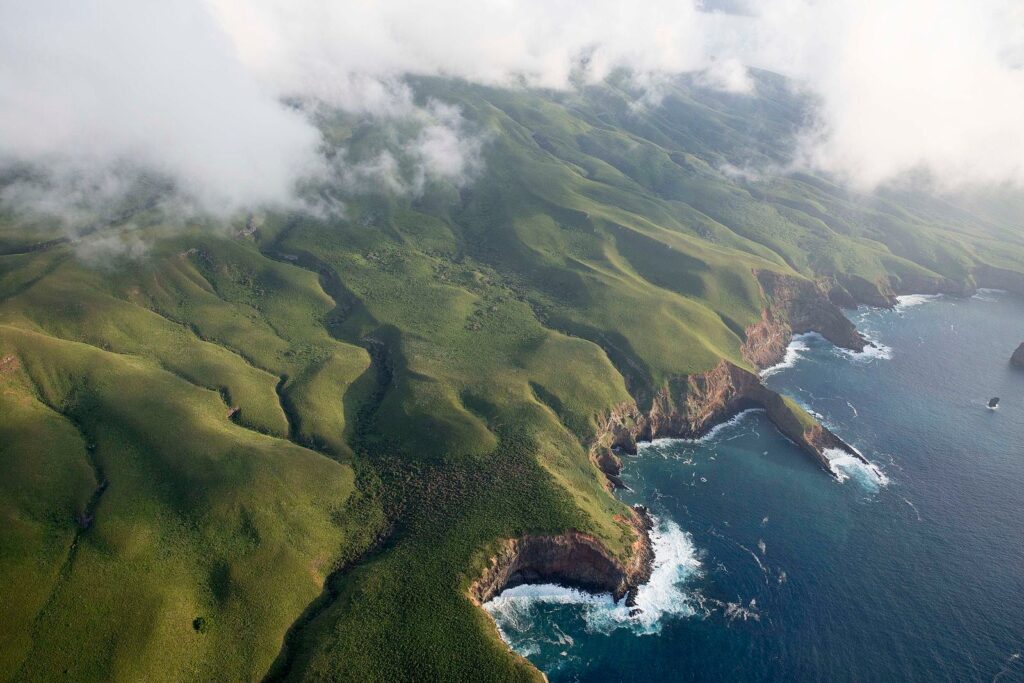
The Wonders of the Sistema Arrecifal Veracruzano National Park
Located in the Gulf of Mexico, the Sistema Arrecifal Veracruzano National Park is a haven for marine biodiversity, showcasing extraordinary coral reefs and a thriving array of marine species. With its rich biodiversity and ongoing preservation efforts, this national park offers a glimpse into the wonders of Mexico’s underwater ecosystems.
The Veracruz Reef System
The Sistema Arrecifal Veracruzano National Park encompasses the Veracruz Reef System, one of Mexico’s most extensive reef systems. Spanning approximately 75 kilometers along the coast of Veracruz, this reef system boasts a variety of habitats, including fringing reefs, patch reefs, and coral gardens.
The reefs of Veracruz are known for their exceptional biodiversity, consisting of over 40 species of hard corals, 250 species of fish, and numerous invertebrates, sponges, and algae. These diverse ecosystems provide vital habitats for countless marine species, contributing to the overall health and resilience of the reef system.
Rich Biodiversity
Thanks to the presence of the Veracruz Reef System, the Sistema Arrecifal Veracruzano National Park boasts an impressive richness of marine life. Snorkelers and divers exploring the park’s coral reefs can encounter a dazzling array of fish species, including damselfish, wrasses, groupers, and snappers.
Sea turtles also frequent the waters of the national park, using the reefs as feeding grounds and nesting sites. These graceful creatures, including the critically endangered hawksbill turtle and the green turtle, contribute to the park’s ecological significance and serve as a conservation focus.
Additionally, the park’s coral reefs support a range of invertebrate species, such as colorful sea anemones, sea stars, and crustaceans. Exploring the reefs reveals a hidden world of intricate relationships and delicate balances that make these ecosystems so fascinating and valuable.
Preservation Efforts
The Sistema Arrecifal Veracruzano National Park faces various conservation challenges, including habitat degradation, pollution, and overfishing. Efforts to preserve the park’s biodiversity and protect its fragile ecosystems are crucial for its long-term survival.
Conservation initiatives focus on environmental education, sustainable tourism practices, habitat restoration, and the enforcement of fishing regulations. By involving local communities, fishermen, and government agencies, these efforts aim to create a sense of shared responsibility for the preservation of the park’s natural heritage.
Research and monitoring play an essential role in understanding the impacts of human activities and climate change on the reef system. By gathering scientific data and engaging in ongoing research, conservationists can develop effective strategies to mitigate threats and ensure the continued health and vitality of the Sistema Arrecifal Veracruzano National Park.
The Colorful Reefs of Cozumel Reefs National Park
Nestled off the coast of the Yucatan Peninsula, the Cozumel Reefs National Park is a haven for divers and nature enthusiasts, offering a vibrant and captivating underwater world. With its majestic coral reefs and abundant marine life, this national park promises an unforgettable exploration of Mexico’s coastal treasures.
Island Location and Travel
Cozumel, the largest island in the Mexican Caribbean, is the setting for the Cozumel Reefs National Park. With its crystal-clear turquoise waters, warm tropical climate, and stunning beaches, Cozumel has become a popular tourist destination for beach lovers and diving enthusiasts.
To reach Cozumel, visitors can take a short ferry ride from the mainland city of Playa del Carmen. The island is easily accessible and offers a range of accommodations, from luxury resorts to budget-friendly options, ensuring a comfortable and enjoyable stay.
Vibrant Coral Reefs
Cozumel Reefs National Park is famous for its exceptional coral reefs, which are considered some of the best in the world. These reefs are part of the Mesoamerican Barrier Reef System, the second-largest barrier reef system on the planet, spanning over 1,000 kilometers from Mexico to Honduras.
The park’s reefs are characterized by their stunning array of coral species, including brain coral, elkhorn coral, and pillar coral. These corals provide the foundation for a thriving ecosystem, supporting countless fish species, colorful sponges, and other invertebrates.
Exploring the park’s coral reefs is like diving into an underwater kaleidoscope of colors. Schools of tropical fish, such as angelfish, parrotfish, and butterflyfish, gracefully navigate the reefs, while rays glide across the sandy bottoms. The vibrant and diverse marine life offers a visual feast for divers, creating an unforgettable experience beneath the waves.
Underwater Activities
Cozumel Reefs National Park offers a range of activities for visitors to immerse themselves in the underwater wonderland. Diving is the main attraction, and the park is renowned for its excellent visibility, warm waters, and diverse marine ecosystems.
Divers can choose from various dive sites, each with its own unique features, including underwater canyons, swim-throughs, and walls adorned with colorful corals. Experienced divers can venture to the famous Santa Rosa Wall and Palancar Reef, while beginners can enjoy the shallower reefs of Paradise Reef and Chankanaab.
Snorkeling is also a popular activity in Cozumel, providing a chance to explore the shallow reefs and encounter a diverse array of marine species. Guided snorkeling tours are available, allowing visitors to learn about the park’s ecology and gain insights into the importance of coral reef conservation.
Cozumel Reefs National Park offers an underwater adventure like no other. Whether diving, snorkeling, or simply soaking in the beauty of the Caribbean Sea, visitors to this national park are sure to be captivated by its vibrant coral reefs and the remarkable diversity of marine life that calls it home.
